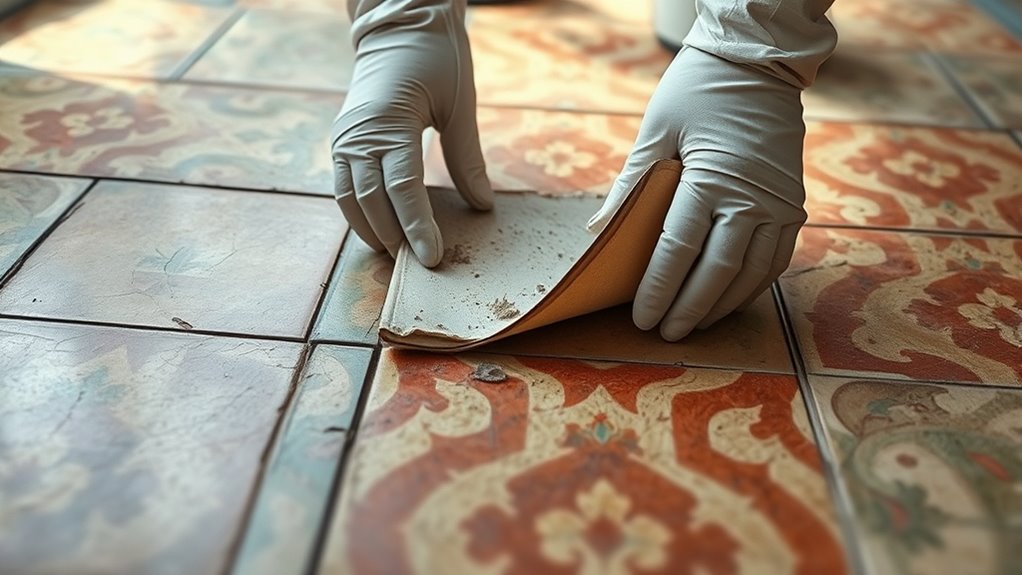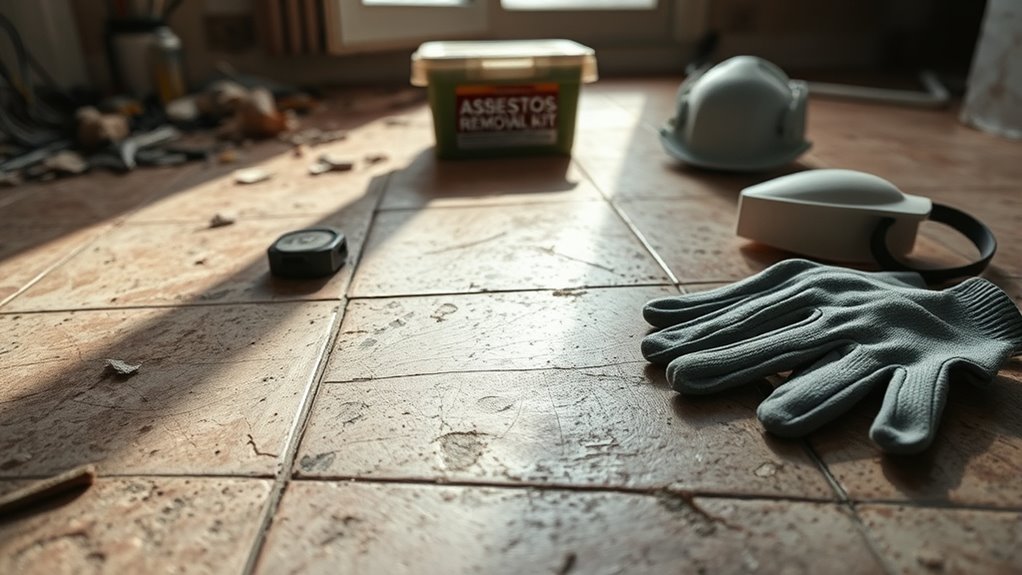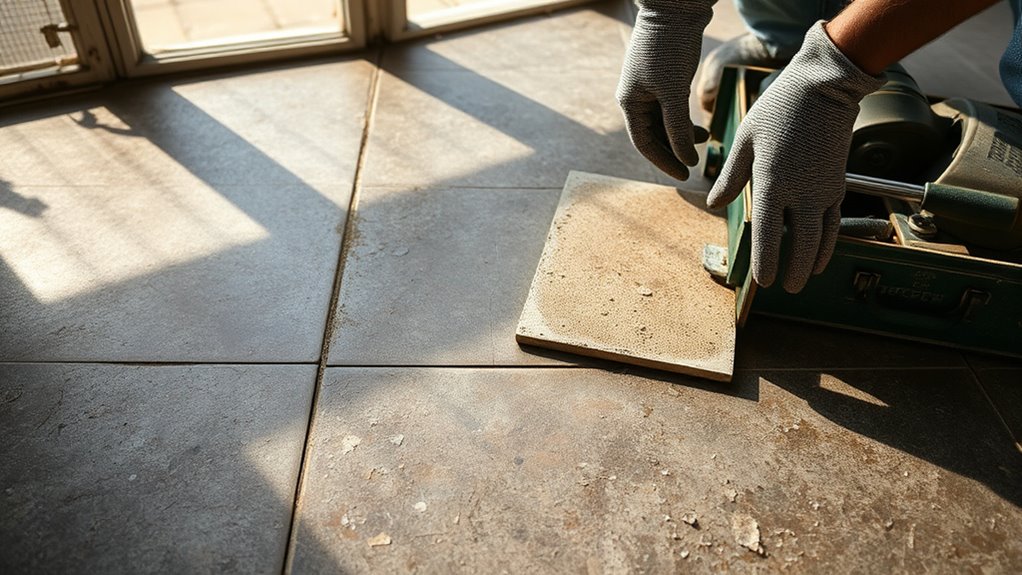Asbestos was commonly used in floor tiles until the late 1970s, with regulations phasing it out by the 1980s. If you suspect your tiles contain asbestos, avoid disturbing them without proper precautions. Safe removal involves wetting tiles to suppress dust, wearing protective gear like respirators and gloves, and carefully prying tiles up intact. Improper handling risks hazardous fiber release and serious health issues. Understanding these safety measures is essential before proceeding further.
History of Asbestos Use in Floor Tiles

Although asbestos was widely used in various building materials throughout the 20th century, its application in piso tiles began in the 1920s and continued until the late 1970s. You should understand that asbestos origins trace back to its natural mineral properties—heat resistance, durability, and tensile strength—making it significant in tile manufacturing. During this period, manufacturers integrated asbestos fibers into vinyl and asphalt-based floor tiles to enhance longevity and fire resistance. While you may appreciate the material’s effectiveness, you must also recognize the health risks discovered later, leading to regulatory restrictions. Knowing this history is essential for anyone seeking freedom from hazardous materials in their homes or workplaces, allowing you to make informed decisions regarding asbestos-containing floor tiles.
Identifying Asbestos-Containing Floor Tiles
When dealing with older buildings, you should be aware that not all floor tiles contain asbestos, but many installed before the late 1970s likely do. To guarantee your safety and freedom from exposure, perform a thorough floor tile inspection before any renovation. Asbestos identification techniques typically require sampling by a certified professional, since visual assessment alone can’t confirm asbestos presence. Lab analysis, such as polarized light microscopy or transmission electron microscopy, offers precise results. Avoid disturbing tiles during inspection to prevent fiber release. Documenting tile type, age, and condition aids in assessment. Remember, accurate identification is vital—it protects you and informs the safest removal method. Don’t rely on assumptions; use established asbestos identification techniques to maintain control and uphold your right to a safe environment.
Health Risks Associated With Asbestos Exposure

Since asbestos fibers are microscopic and easily inhaled, exposure can pose serious health risks that may not become apparent until years later. When you disturb asbestos-containing floor tiles, these fibers can become airborne, leading to inhalation. This exposure increases your risk of developing asbestos diseases such as asbestosis, lung cancer, and mesothelioma. Early exposure symptoms are often subtle or absent, making it difficult to detect harm until the disease progresses. You should be aware that even low-level, chronic exposure can accumulate, affecting your respiratory system over time. Understanding these risks underscores why handling asbestos materials requires strict precautions to protect your health and maintain your freedom from preventable illness. Recognizing exposure symptoms early and minimizing contact are vital steps toward safety.
Regulations and Phase-Out Timeline
Understanding the health risks linked to asbestos exposure highlights why strict regulations have been implemented to control its use and removal. Regulatory changes began in the late 1970s, leading to phased restrictions and eventual bans. Knowing the phase out dates helps you identify whether asbestos might be present in your floor tiles.
| Year | Regulation Type | Impact on Asbestos Use |
|---|---|---|
| 1973 | Initial Restrictions | Limited asbestos in products |
| 1977 | Ban on Sprayed Asbestos | Major reduction in exposure |
| 1980 | Labeling Requirements | Mayor conciencia |
| 1989 | Extensive Ban | Prohibited most asbestos use |
| 1990s | Phase Out Completion | Nearly all asbestos removed |
Stay informed about these phase out dates for your safety and freedom in managing your property.
Safe Methods for Removing Asbestos Floor Tiles

Although removing asbestos floor tiles can be hazardous, following strict safety protocols greatly reduces the risk of exposure. You’ll want to employ specific removal techniques designed to minimize fiber release. Begin by wetting the tiles thoroughly to suppress dust, then carefully pry them up without breaking or sanding. Always wear appropriate personal protective equipment, including a respirator rated for asbestos, disposable coveralls, gloves, and eye protection. Ventilate the area well but avoid creating airflow that could spread fibers. Collect debris in sealed, labeled containers for proper disposal according to local regulations. Avoid using power tools or aggressive scraping, as these increase fiber release. By adhering to these safety precautions and removal techniques, you protect both your freedom to work safely and the health of everyone in the space.




